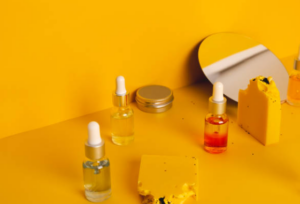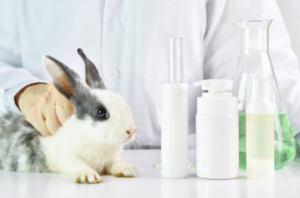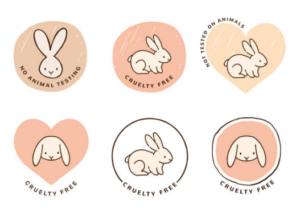Debunking Myths

In recent years, there has been a significant shift in consumer preferences towards cruelty-free and ethically sourced beauty products. More and more consumers are becoming conscious of the impact their purchases have on animals and the environment. However, one common misconception persists: the belief that cruelty-free products are always more expensive. In this comprehensive guide, we will delve deep into this myth and explore the truth behind the cost of cruelty-free beauty products.
Before we dissect the cost aspect, let’s clarify what “cruelty-free” means in the context of beauty products. A cruelty-free product is one that has not been tested on animals at any stage of its production process. This includes both the finished product and its individual ingredients. While cruelty-free products do not harm animals, they can still contain animal-derived ingredients unless specified otherwise.
Myth #1: Cruelty-Free Equals Expensive
One of the most common myths surrounding cruelty-free beauty products is that they come with a hefty price tag. While it’s true that some cruelty-free brands may be positioned in the luxury market, there are plenty of affordable options available as well. In fact, many mainstream drugstore brands have adopted cruelty-free practices, making cruelty-free products accessible to consumers at all price points.
To understand why this myth persists, we need to examine the factors that contribute to the cost of beauty products. These factors include research and development, packaging, marketing, and distribution. While cruelty-free formulations may require additional testing and certification to ensure compliance with ethical standards, this doesn’t necessarily translate to higher prices for consumers.
Additionally, the growing demand for cruelty-free products has spurred competition in the beauty industry, leading to more affordable options entering the market. As a result, consumers now have a wide range of cruelty-free products to choose from, regardless of their budget.
- Ingredient Sourcing and Formulation Costs: One common misconception is that cruelty-free formulations require more expensive ingredients. While some cruelty-free brands may choose to use premium or organic ingredients, this isn’t always the case. Many cruelty-free brands prioritize affordability by sourcing ingredients efficiently and focusing on effective formulations that don’t compromise on quality. Additionally, advancements in technology have made it possible to create cruelty-free alternatives to animal-derived ingredients without driving up production costs.
- Certification and Testing Expenses: Some consumers believe that cruelty-free certifications add to the cost of products. While obtaining certifications such as the Leaping Bunny or PETA’s Beauty Without Bunnies logo may involve additional paperwork and testing, these expenses are often absorbed by the brand rather than passed on to the consumer. In fact, many cruelty-free brands view certification as a worthwhile investment that enhances their brand reputation and credibility among consumers who prioritize ethical shopping.
- Marketing and Brand Positioning: Luxury cruelty-free brands often position themselves as premium or niche products, which may contribute to the perception that all cruelty-free products are expensive. However, this is not indicative of the entire cruelty-free market. Many mainstream and drugstore brands have embraced cruelty-free practices without sacrificing affordability. These brands prioritize accessibility and affordability, making cruelty-free products available to a wider audience.
- Economies of Scale: As demand for cruelty-free products continues to grow, economies of scale come into play, allowing brands to produce larger volumes at lower costs per unit. This can translate to savings for consumers, as brands pass on these cost efficiencies in the form of competitive pricing. Additionally, as more consumers choose cruelty-free options, retailers are increasingly stocking a diverse range of cruelty-free products, further driving competition and affordability in the market.
- Consumer Perception and Brand Loyalty: Some consumers may be willing to pay a premium for cruelty-free products due to their ethical and environmental values. However, this doesn’t mean that all cruelty-free products are expensive. Many brands recognize the importance of offering affordable options to cater to a broader audience. By debunking the myth that cruelty-free equals expensive, brands can attract new customers and build brand loyalty among those who prioritize affordability without compromising on ethics.

Myth #2: Cruelty-Free Products Are Lower Quality
Another misconception surrounding cruelty-free beauty products is that they are inferior in quality compared to their non-cruelty-free counterparts. This myth stems from the belief that extensive animal testing is necessary to ensure product efficacy and safety. However, this couldn’t be further from the truth.
- Advancements in Cosmetic Science: Over the years, there have been significant advancements in cosmetic science, leading to the development of innovative and effective cruelty-free formulations. Brands are now able to create high-quality products using plant-based and synthetic ingredients that offer numerous skincare benefits without the need for animal testing. These formulations undergo rigorous testing and evaluation to ensure safety and efficacy, resulting in products that rival or even surpass those that have been tested on animals.
- Natural and Plant-Based Ingredients: Many cruelty-free brands prioritize the use of natural and plant-based ingredients in their formulations. These ingredients are often rich in antioxidants, vitamins, and other nutrients that nourish and protect the skin. For example, botanical extracts like green tea, aloe vera, and chamomile offer soothing and anti-inflammatory properties, while oils such as argan, jojoba, and rosehip provide hydration and nourishment. By harnessing the power of nature, cruelty-free brands can deliver effective skincare solutions without compromising on quality.
- Ethical and Sustainable Practices: Cruelty-free brands often adhere to higher ethical and environmental standards, which can translate to higher-quality products. These brands prioritize sustainable ingredient sourcing, eco-friendly packaging, and ethical manufacturing practices. By choosing cruelty-free options, consumers can support brands that are committed to reducing their environmental footprint and promoting ethical treatment of animals. This emphasis on sustainability and ethics reflects a broader commitment to quality and integrity in product development.
- Innovative Formulations: Cruelty-free brands are known for their commitment to innovation and creativity in product development. Many of these brands invest heavily in research and development to create cutting-edge formulations that deliver exceptional results. Whether it’s a groundbreaking serum, a revolutionary sunscreen, or a game-changing moisturizer, cruelty-free brands are constantly pushing the boundaries of skincare technology to offer consumers the best possible products. By embracing innovation, these brands can deliver high-quality skincare solutions that meet the diverse needs of consumers.
- Consumer Demand for Transparency: In today’s beauty landscape, consumers are more informed and discerning than ever before. They value transparency and authenticity in the brands they support and are quick to hold companies accountable for their actions. As a result, cruelty-free brands are under pressure to deliver products that meet high standards of quality, efficacy, and safety. By prioritizing transparency and consumer trust, these brands can build strong relationships with their customers and establish themselves as leaders in the industry.

Tips for Shopping Cruelty-Free on a Budget
- Research and Identify Affordable Brands: Take the time to research and identify cruelty-free brands that offer products within your budget range. While some brands may be more expensive, there are many affordable options available, especially among drugstore and online brands. Look for brands that prioritize accessibility and affordability without compromising on quality or ethics.
- Check for Cruelty-Free Certifications: Look for cruelty-free certifications such as the Leaping Bunny logo or PETA’s Beauty Without Bunnies logo when shopping for skincare and cosmetics. These certifications ensure that the brand and its suppliers do not conduct animal testing at any stage of production. By choosing certified cruelty-free products, you can shop confidently knowing that your purchases align with your values.
- Explore Drugstore and Online Retailers: Many drugstore and online retailers carry a wide range of cruelty-free beauty products at affordable prices. Explore these retailers to discover budget-friendly options from both well-known and emerging cruelty-free brands. Keep an eye out for special promotions, discounts, and sales events that can help you save even more on your favorite products.
- Read Reviews and Research Ingredients: Before making a purchase, take the time to read reviews and research the ingredients in the products you’re interested in. Look for reviews from other consumers who have similar skin concerns or preferences to gauge the effectiveness and quality of the products. Additionally, familiarize yourself with common cruelty-free ingredients and their skincare benefits to make informed choices.
- Opt for Multipurpose Products: Choose multipurpose products that serve multiple functions to get more value out of your purchases. For example, look for tinted moisturizers with SPF that provide hydration, sun protection, and light coverage in one step. Similarly, consider investing in products that can be used for both skincare and makeup, such as hydrating primers or tinted lip balms.
- Look for Sales, Promotions, and Discounts: Keep an eye out for sales, promotions, and discounts on cruelty-free products from your favorite brands and retailers. Many brands offer special deals throughout the year, especially during holidays, seasonal events, and promotional periods. Sign up for email newsletters or follow brands on social media to stay informed about upcoming sales and promotions. Additionally, consider joining loyalty programs or reward schemes offered by retailers to earn discounts or exclusive perks when shopping for cruelty-free products.
- Consider DIY and Homemade Options: For those who enjoy experimenting and crafting their own skincare and beauty products, consider exploring DIY and homemade options. Many natural and cruelty-free ingredients can be found at affordable prices and used to create personalized skincare solutions at home. From facial masks and scrubs to bath bombs and body butters, there are endless possibilities for creating cruelty-free products tailored to your specific needs and preferences.
- Shop in Bulk or Look for Value Sets: Consider shopping in bulk or purchasing value sets to save money on your favorite cruelty-free products. Many brands offer discounted prices when you buy larger quantities or bundle products together. This can be especially cost-effective for staple items such as cleansers, moisturizers, and sunscreen, which you use regularly and can stock up on when they’re on sale.
- Explore Affordable Alternatives: If you find that certain cruelty-free brands are out of your budget, don’t be afraid to explore more affordable alternatives. Many mainstream and drugstore brands have adopted cruelty-free practices and offer budget-friendly options that are comparable in quality to higher-end brands. Look for cruelty-free dupes or alternatives for your favorite products to find affordable options that suit your needs and preferences.
- Join Online Communities and Forums: Joining online communities and forums dedicated to cruelty-free beauty can be a valuable resource for discovering budget-friendly products and sharing tips and recommendations with like-minded individuals. Participate in discussions, ask for advice, and share your own experiences to learn from others and expand your knowledge of cruelty-free beauty on a budget.

In conclusion, the belief that cruelty-free products are always more expensive is a myth that needs to be debunked. While there may be luxury cruelty-free brands on the market, there are also plenty of affordable options available to consumers. Additionally, cruelty-free products are not inherently lower in quality; in fact, many of them offer excellent results without the need for animal testing. By doing your research, reading reviews, and shopping smart, you can easily incorporate more cruelty-free products into your beauty routine without breaking the bank. Let’s debunk this myth once and for all and embrace a more ethical and sustainable approach to beauty.

